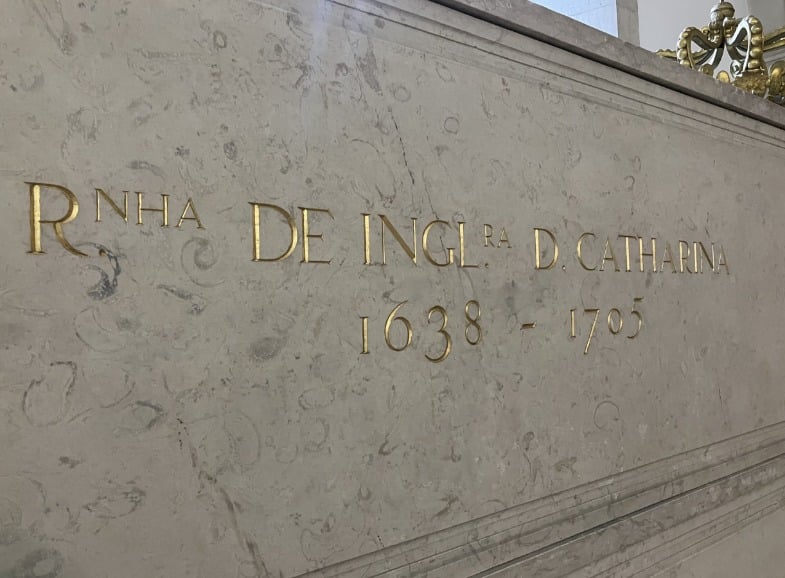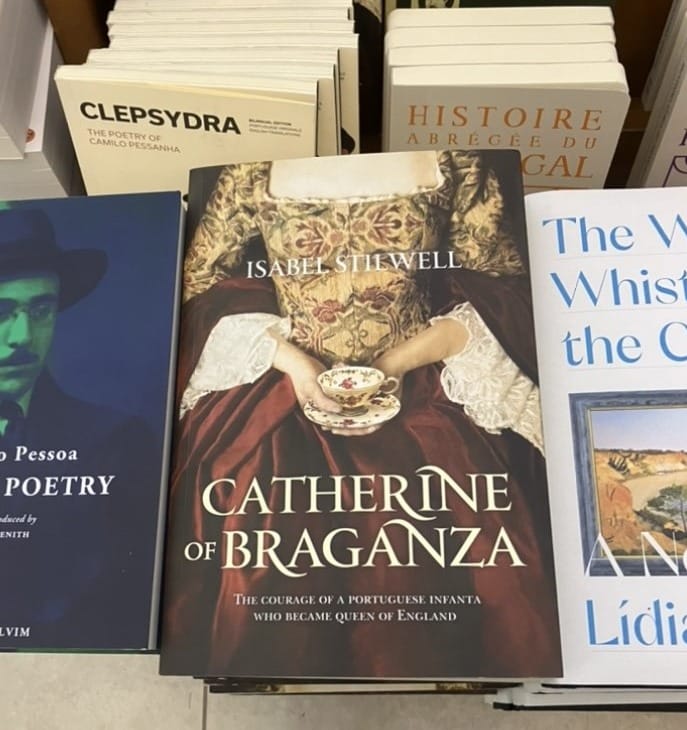Last December, I was fortunate enough to visit Portugal. While I was there, I did a guided tour and paid some kind of a tribute to a person that played an important role in the history of tea – Queen Catherine of Braganza.
It is 1662 and Catherine, the daughter of Portugal King’s João IV, was preparing to leave her home country to marry King Charles 2 in England. For the young princess, moving meant that she would have to give up eating some of her favorite foods. She truly did not want to give up on something that she’d enjoyed since she was a child – TEA.
So along with some of her personal belongings, Catherine packed a whole chest of tea and accessories as part of her dowry. Prepared to keep her tea drinking tradition alive, off she went to England.

Portrait of young Catherine in the hall of the Pantheon.
Life definitely wasn’t easy at first for the new Queen of England. Her lack of popularity was evident as she was criticized for her unusual Portuguese costumes and strange hair style which were considered archaic curiosities.
After some time, she started following the English way of life by adopting a more fashionable style. She introduced arts and music such as Italian opera, marmalade and cutlery. She also organized innumerable balls and events. She became famous so everyone in the aristocracy wanted to be like her so they gradually started to incorporate tea in their daily routine. Tea became a fashionable refreshment and social event for elite women to gather for gossip and to show off their tea paraphernalia.
According to my guide, Catherine made a habit of inviting female guests not only to serve tea, exhibit her cutlery, exquisite china and finest porcelain to her circle of friends, but also to find out who her husband was cheating on her with (usually the one that didn’t show up at the afternoon tea). The King was well known for his infidelity and while Catherine was unable to produce an heir to the thrown, he sired several children with his various mistresses. Talk about “spilling the tea!”
Catherine didn’t introduced tea to England
To be clear, tea was already in England before Catherine’s arrival. Early literature says that there were records of tea drinking in England in 1657 which was 6 years before she came to England. At that time, it was mostly considered a medicine that was meant to invigorate the body and keep the spleen free of obstructions. With the arrival of Catherine at the court, tea went from a restorative tonic that was part of a daily routine into a social and quintessential beverage.
She can be seen as a tea ambassador and developed the British taste for tea. She made a good marketing effort and made it trendy with the aristocracy. Making consuming it fashionable not only to the wealthy community but for the whole country had prices of tea starting to go down. Seven years after the death of King Charles in 1685, Catherine decided to return to her homeland 30 years after she left the country. She died on December 31st. 1705 and was buried at the Royal Pantheon of Bragança located inside the church of Sao Vincente de Fava in Lisbon Portugal which is open to the public.

Did Catherine contribute to the origins of the word “tea”?
Have you ever wondered where the word “TEA” comes from? Would it simply be a translation or an acronym? All over the world – tea is mostly known as “CHA ” or some kind of derivative such as chai, caj or even thee or te.
But rumor has it that Catherine was also behind the word tea as her crates were marked “Transporte de Ervas Aromaticas” which was later abbreviated as TEA. Some etymologist believe that the word comes from the modification of a Chinese character from 荼 (that meant bitter vegetable) to 茶 during the middle of the Tang Dynasty.
Did you know?
In 1683 Queens county was established as one of the 12 counties of the province of New York and was named to honor the queen consort of Charles II, Catherine of Braganza.
“The best of Queens, the best of herbs, we owe to that bold nation which the way did show, to the fair region where the sun doth rise, whose productions we so justly prize.” – Poem written to the Queen on her 25th birthday by Edmund Waller (1663)

I saw this book written by Portuguese journalist and writer Isabel Stilwell in a library right after my guided tour!
Sarah + Chris
What is your tea drinking tradition? Let us know in the comments below.


